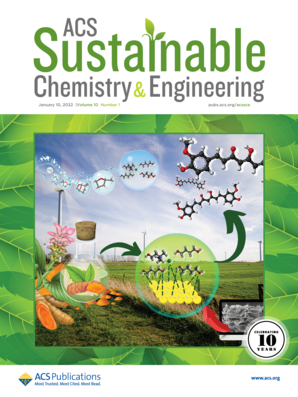High Elasticity and Stability of Thermally Conductive Composites Offered by Disulfide Exchange-Based Silicone Elastomers
IF 7.1
1区 化学
Q1 CHEMISTRY, MULTIDISCIPLINARY
引用次数: 0
Abstract
Due to its excellent flexibility, silicone-based materials are widely used in the thermal management of modern electronic devices, but they still face risks of cracking and silicone contamination. In this work, a silicone elastomer (EPHMS) is achieved through the cross-linking between a synthesized epoxy-terminated PDMS and 4-aminophenyl disulfide (APD). The synthesized EPHMS demonstrates exceptional elasticity and thermal stability, showing a 98% recovery efficiency and no detectable silicone migration under sustained compressive strain. Additionally, it possesses an initial thermal degradation temperature of 285 °C. The disulfide exchange endows EPHMS with self-healing and reprocessing capabilities. Boron nitride (BN) fillers were further incorporated into the matrix to enhance the thermal conductivity of EPHMS. The composite achieves a thermal conductivity of 2.70 W m–1 K–1 when the mass fraction of BN is 40%, and it retains as high as a 97% recovery rate in compression tests. As indicated, the composite also exhibits self-repairing and reprocessing abilities. This work points to a new path for developing elastic and stable thermally conductive materials.

二硫交换基有机硅弹性体导热复合材料的高弹性和稳定性
由于其优异的柔韧性,硅基材料被广泛应用于现代电子器件的热管理,但它们仍然面临着开裂和硅污染的风险。在这项工作中,有机硅弹性体(EPHMS)是通过合成的环氧端部PDMS和4-氨基苯基二硫醚(APD)之间的交联得到的。合成的EPHMS具有优异的弹性和热稳定性,在持续的压缩应变下,回收率达到98%,并且没有检测到有机硅迁移。此外,它具有285°C的初始热降解温度。二硫交换使EPHMS具有自愈和后处理能力。进一步在基体中加入氮化硼(BN)填料,以提高EPHMS的导热性。当BN质量分数为40%时,复合材料的导热系数为2.70 W m-1 K-1,在压缩试验中保持高达97%的回收率。如所示,复合材料还具有自我修复和再加工能力。这项工作为开发具有弹性和稳定性的导热材料指明了一条新的途径。
本文章由计算机程序翻译,如有差异,请以英文原文为准。
求助全文
约1分钟内获得全文
求助全文
来源期刊

ACS Sustainable Chemistry & Engineering
CHEMISTRY, MULTIDISCIPLINARY-ENGINEERING, CHEMICAL
CiteScore
13.80
自引率
4.80%
发文量
1470
审稿时长
1.7 months
期刊介绍:
ACS Sustainable Chemistry & Engineering is a prestigious weekly peer-reviewed scientific journal published by the American Chemical Society. Dedicated to advancing the principles of green chemistry and green engineering, it covers a wide array of research topics including green chemistry, green engineering, biomass, alternative energy, and life cycle assessment.
The journal welcomes submissions in various formats, including Letters, Articles, Features, and Perspectives (Reviews), that address the challenges of sustainability in the chemical enterprise and contribute to the advancement of sustainable practices. Join us in shaping the future of sustainable chemistry and engineering.
 求助内容:
求助内容: 应助结果提醒方式:
应助结果提醒方式:


